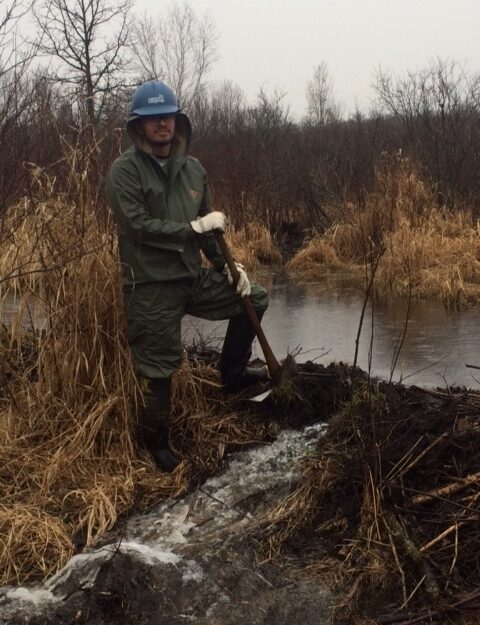What do we do exactly?

By: Rafael Contreras-Rangel

In my last blog I shared my story on how I got to the Corps and explained how I enjoy serving the community by preserving local parks and ecosystems. As I was thinking on what I could possibly write for this month, I noticed that even though I expressed my satisfaction in doing conservation work, I did not really share what kind of work I do with the Corps. So for this month, I have decided to share some of the projects my crew and I have done since my last blog.
One of the first projects we got to tackle was to scout for the invasive species — oriental bittersweet — at the Brown’s Creek State Trail. If you have ever visited this trail, you’ll probably remember the signs that tell you to stay on the trail. But one of the perks of working with the Conservation Corps and looking for invasives is that you do not have to stay on the trail. In fact, you are required to venture off the trail in order to find the invasive species you are scouting for. And let me tell you, if you think the scenery of parks are nice while you visit them, know that the real gems are off-trail. But don’t just go off trail next time you visit a park! Because that is how invasive species spread and habitat is degraded! If you really want to go off trail and experience the real beauty of parks, you can always volunteer for restoration days with the park staff. That way you can venture to places people rarely get to see and restore habitat at the same time.
Speaking of things you rarely get to see, about three weeks ago we worked at Wild River State Park, and during our time there we got to see a bald eagle tend to its nest and fly so low on the river that you did not even need binoculars. We also stayed long enough to see the trail we used every day to get to our worksite become flooded due to heavy rain. But my favorite experience from there, hands down, was to break open a beaver dam. Unfortunately, the beaver population there is growing so large that it is affecting the local ecosystem. Beavers are known as ecosystem engineers, meaning that they are able to change the local ecosystem into a different one. In this case, the beavers were changing a prairie ecosystem into a wetland by building dams. The food that beavers like best come from trees that grow best on wet soils, which is one of the reason they build dams.
While working with invasive species and breaking open beaver dams was pretty cool, we finally got to the project that my crew and I were most looking forward to last week when we started working at Sherburne National Wildlife Refuge. My crew and I were really excited to work here because a lot of what we do here are prescribed fires, and let’s be honest, everybody likes to play with fire. We all got to use the water pumps from the trucks and use fire torches. One of my crew members even got to fire a flare gun to start internal ignition! I had participated on prescribed fires during my previous job, but only on small ones. Here we burned over one-thousand acres just last week! What I’ve been enjoying the most of this project is that we are learning how to conduct prescribed fires in a safe environment. While it can be scary to burn this amount of acres, it makes it so much better knowing that you have people with you that have been doing this type of work for over twenty years.
I could continue sharing all of the fun experience I’ve had with the Corps so far, but this would end up a novel instead of a blog. I hope that sharing some of my experiences in this blog has shed some light on the kind of work that the corps does as well as show why I enjoy working with the corps so much. Obviously there are many other things that we do, and if the time is right I might share them in a future blog! There is talk that next week we will have a burn with a helicopter, so if that ends up happening I will definitely write about it! Until next time!
